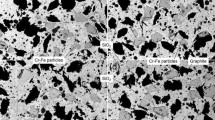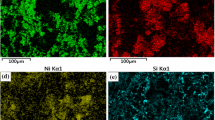Abstract
The non-asbestos organic friction materials with various abrasives such as ZrO2, ZrSiO4, Al2O3, Fe3O4 were manufactured and underwent friction tests to find conditions for transfer film formation and their effect on friction coefficients, and also the effect of different abrasive components was analyzed. Friction tests were composed of the effectiveness test and the fade & recovery test successively and counterpart disks were examined at each stage to find transfer film distribution changes. Friction surface observation by SEM revealed that the transfer film was formed not in the effectiveness stage which simulated the normal braking condition, but in the fade stage when temperature rose up to 600°C. The level of friction coefficients for most friction materials turned out to be opposite to the quantity of transfer film formation implying that the transfer film reduced the friction coefficient. High temperature condition was requisite for transfer film generation, but the transfer film was hardly formed irrespective of the magnitude of deceleration rate under moderate operating conditions where temperature stayed below 350°C. Among the friction materials tested, friction material which contained Al2O3 produced the least transfer film but showed the highest friction coefficient throughout the entire stages of the friction test.
Similar content being viewed by others
Abbreviations
- N :
-
normal force applied to a brake pad
- F :
-
frictional force
- μ :
-
coefficient of friction
- T :
-
brake torque
- Af :
-
percentage of friction surface covered with transfer film over the total friction surface under investigation, %
- g:
-
gravitational acceleration, 9.8m/s2
References
Seo, Y. C., Chung, J. O., and Park, J. H., “Friction Characteristics of Disk Brake Pads with Different Abrasive Components,” Proc. of Korean Society of Automotive Engineers Conference, KSAE05-F0316, pp. 1992–1999, 2005.
Chung, J. O., Go, S. R., Kim, J. H., Kim, H. R., Choi, H. B., et al., “Formation of Transfer Films in NAO Friction Materials Containing Different Abrasive Components,” International Scientific Conference on Engineering and Applied Sciences, No. 1203, pp. 177–184, 2016.
Go, S. R., “Formation of Transfer Films in NAO Friction materials Containing Different Abrasive Components,” M.Sc. Thesis, Sunchon National University, 2017.
Park, J. H., Chung, J. O., and Kim, H. R., “Friction Characteristics of Brake Pads with Aramid and Acrylic Fiber,” Industrial Lubrication and Tribology, Vol. 62, No. 2, pp. 91–98, 2010.
Eriksson, M., Bergman, F., and Jacobson, S., “On the Nature of Tribological Contact in Automotive Brakes,” Wear, Vol. 252, Nos. 1-2, pp. 26–36, 2002.
Rashid, A., “Overview of Disc Brakes and Related Phenomena -A Review,” International Journal of Vehicle Noise and Vibration, Vol. 10, No. 4, pp. 257–301, 2014.
Hong, U. S., Jung S. L., Cho, K. H., Kim, S. J., and Jang, H., “Wear Mechanism of Multiphase Friction Materials with Different Phenolic Resin Matrices,” Wear, Vol. 266, Nos. 7-8, pp. 739–744, 2009.
Österle, W. and Dmitriev A. I., “Functionality of Conventional Brake Friction Materials-Perceptions from Findings Observed at Different Length Scales,” Wear, Vol. 27, Nos. 9-10, pp. 2198–2207, 2011.
Österle, W., Dörfel, I., Prietzel, C., Rooch, H., Cristol-Bulthe, A. L., Degallaix, G., and Desplanques, Y., “A Comprehensive Microscopic Study of Third Body Formation at the Interface between a Brake Pad and Brake Disc during the Final Stage of a Pin-on-Disc Test,” Wear, Vol. 267, Nos. 5-8, pp. 781–788, 2009.
JASO C406, “Passenger Car-Braking Device-Dynamometer Test Procedures,” 2000.
Kim, H. R., “Development of High Performance Brake Pad Used for Racing and Street Together,” Industry and Energy of Korea Government, 2015-R0004062, 2015.
Chung, J. O., Go S. R., Choi J. K., Choi H. B., and Kim H. R., “Transfer Film Formation and Its Effect on Friction Coefficient at Various Friction Temperature in NAO Friction Material,” Transaction of KSAE, Vol. 26, No. 1, pp.42–51, 2018.
Author information
Authors and Affiliations
Corresponding author
Rights and permissions
About this article
Cite this article
Chung, JO., Go, SR., Kim, JH. et al. Conditions for Transfer Film Formation and Its Effect on Friction Coefficients in NAO Friction Materials Containing Various Abrasive Components. Int. J. Precis. Eng. Manuf. 19, 1011–1017 (2018). https://doi.org/10.1007/s12541-018-0119-7
Received:
Revised:
Accepted:
Published:
Issue Date:
DOI: https://doi.org/10.1007/s12541-018-0119-7




